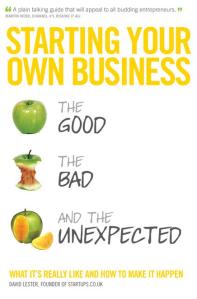 In the last few days several friends and relatives have been asking me about Twitter. Some are just curious, others are more hostile, and want me to justify this latest Internet intrusion into their consciousness.
In the last few days several friends and relatives have been asking me about Twitter. Some are just curious, others are more hostile, and want me to justify this latest Internet intrusion into their consciousness.
Thank goodness those wonderful people at Smarta have come up with a solution in the form of their free Twitter eBook.
I am hoping they won’t mind me summarising some of the book’s key points here, although I would thoroughly recommend you download the pdf and keep a copy close to hand.
It comes down to T.A.T. – Time, Attention and Trust. These three things dominate the landscape of our personal and business lives. Someone has shifted the world up a gear and stuck their foot hard on the accelerator. We’re all doing more with less, we need to take in and absorb so much information, to keep up. As a result, traditional marketing is finding it harder to cut through: prospects are distracted, busy in their own world, occupied by their own challenges of how they blend work and home.
But before you get into Twitter, there are some things you should know. It won’t happen overnight. In social media terms, return on investment (ROI) translates into return on engagement (ROE), starting today doesn’t mean profits tomorrow. Think of engagement more like a courtship, a series of interactions, that will lead to you developing a relationship with someone over time, ultimately which may lead to a sales marriage. It’s a long term investment for most, not a quick killing.
Phil Jones – UK Sales and Marketing director of Brother – @PhilJones40
The real-time effect of Twitter opens up a whole new world of business opportunities for us all and we need to prepare ourselves to be ready for them. When I recently needed a party company to supply (at short notice) a children’s Easter egg hunt, I didn’t search Google, I tweeted. Three companies replied to me with links to their websites, swiftly followed up by some of their followers’ testimonials. Google’s great, but personal recommendation rules.
Shaa Wasmund – Founder of Smarta – @shaawasmund
“Twitter is a chance to be yourself and give a human voice to your business. It creates intimacy and friendliness more than anything, and that’s what so many businesses struggle with online. Talk to your followers – invest a bit of time in reading their tweets and commenting on what they’re doing. Next time, they’ll remember you rather than going to a competitor.”
@DuncanBanntyne
Twitter is not the right channel for direct sales, but it will help grow your customer base and build your brand – which means it’s good for indirect sales in the longterm. Used effectively, Twitter can help you:
• Develop a more personal, engaged and sustained relationship with customers
• Grow your customer base
• Get the attention of people interested in your industry or your work
• Publicise your business
• Build your brand
• Track what other people think about your business, products and industry
• Grow your personal network of contacts and develop business relationships
• Cold-contact and market to people without annoying them
• Drive more traffic to your website or blog
• Position yourself as an expert in your field by sharing news and information relevant to your business and by answering questions
• Provide amazing customer service in a really easy way
• Keep ahead of the latest industry news and events
• Position your business as up-to-date and in-touch, for being on Twitter
• Provide customers with details of special offers, new products and other news you have
• Develop and test products and services your customers want
• Pinpoint customer locations to within a 20-mile radius
Here are some basic ground rules for success:
• Only tweet 120 characters or less, so others can RT you.
• It’s OK to tweet occasionally if you’re having a cup of coffee, but if you’re a plumber focus on tweeting links to useful websites offering tips on how to stop a leaky tap.
• Provide information, insight and opinion.
• Be helpful. Answer questions where you can.
• Tweets with links in them are more popular than those without.
As something of a late adopter of Social Media Marketing activities myself I can relate to the negative comments I often come across. My current response is that even if you don’t like it, the simple truth is that it works, and will generate business for you. The Smarta eBook has a page on Dolan Bikes, showing how they grew their Twitter following from seven to more than 500, and have sold 12 bikes worth between £1,000 and £3,500 on the back of their Twitter activity. As they say, in business – money talks.
http://www.smarta.com/advice/ebooks/smarta-twitter-ebook
and Trust. These three things dominate
the landscape of our personal and
business lives. Someone has shifted
the world up a gear and stuck their foot
hard on the accelerator. We’re all doing
more with less, we need to take in and
absorb so much information, to keep
up. As a result, traditional marketing
is finding it harder to cut through:
prospects are distracted, busy
in their own world, occupied by
their own challenges of how
they blend work and home.




 Good Small Business Guide 2010 [new edition replaces last year’s edition]
Good Small Business Guide 2010 [new edition replaces last year’s edition]








 As a librarian of over 20 years there is nothing I like better than a book whose title describes its contents.
As a librarian of over 20 years there is nothing I like better than a book whose title describes its contents. Thanks to an interview with
Thanks to an interview with 